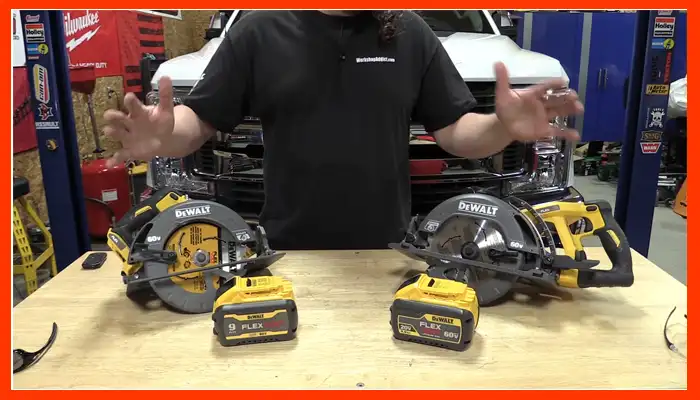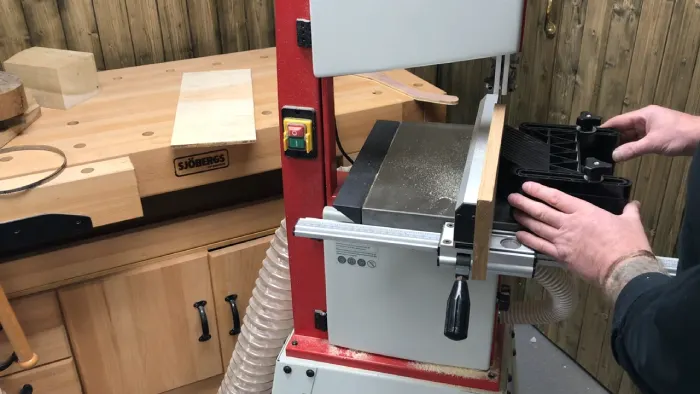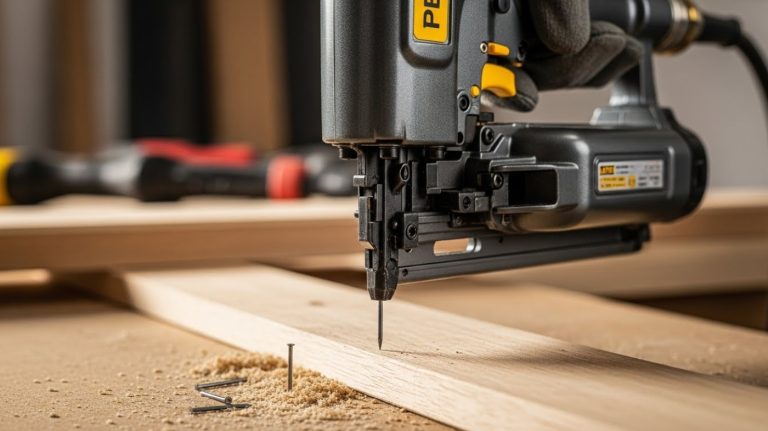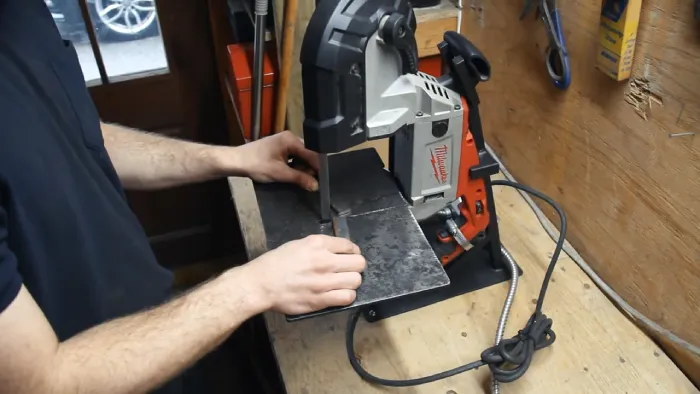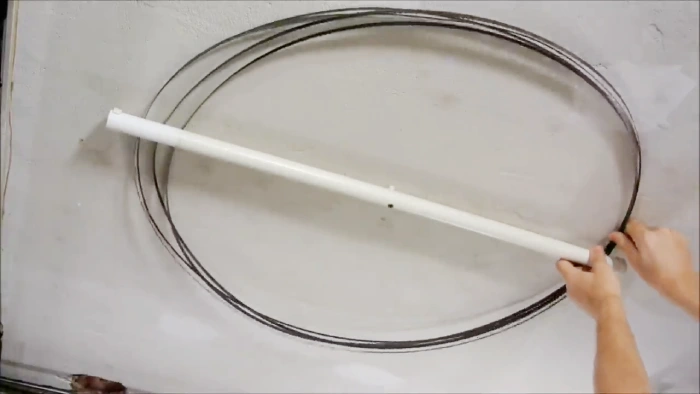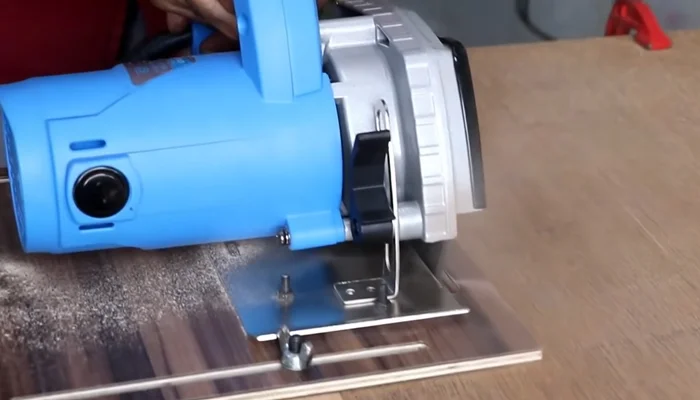Right Handed vs Left Handed Circular Saw: 8 Differences
The choice of blade orientation in circular saws is a critical decision for woodworkers, and it directly impacts their comfort, safety, and efficiency in various woodworking tasks. Circular saws come in two primary configurations: right-handed and left-handed, each catering to the dominant hand of the user.
Right-handed circular saws have the blade positioned on the right side of the motor, while left-handed saws have the blade on the left side.
In one-handed operation, right-handed circular saws provide better control and visibility since they align with the user’s dominant hand on the trigger. Conversely, left-handed circular saws provide a comfortable setup for left-handed people but may obscure visibility when used two-handed.
Here, I’ll discuss the nuances of these two orientations, diving into their safety features and compatibility with different handedness. So, whether you’re a righty or a lefty, let’s dive into the world of circular saws and find the perfect fit for your woodworking needs.
- Powerful 5150 RPM Motor
- Lightweight Magnesium Construction
- Versatile 0-50 Degree Bevel Capability
- Optimized Rubber Grip for Control
- 6-1/2-Inch Carbide-Tipped Blade Efficiency
- Powerful 15-Amp Motor
- Precision Cuts at Multiple Angles
- Lightweight and Comfortable Design
- Advanced Composite Footplate for Stability
- Dust Control with Blower Technology
Differences Between Right Handed and Left Handed Circular Saw
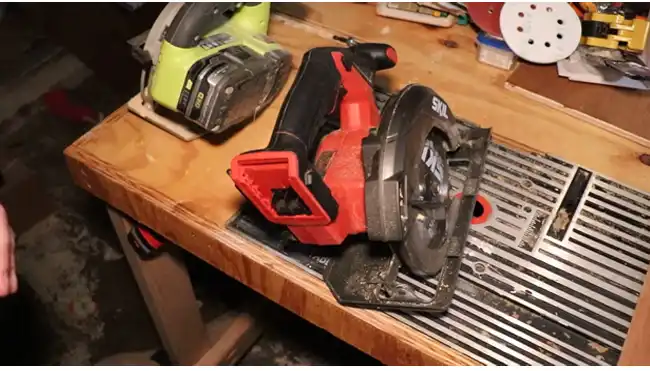
When comparing right-handed and left-handed circular saws for woodworking jobs, there are several important points I found.
- Blade orientation and cut line visibility
- Motor weight distribution
- User dominance and comfort
- Safety and blade exposure
- Dust control and efficiency
- User familiarity with corded and cordless models
- Carpentry scenarios
- Blade selection
No 01. Blade Orientation and Cut Line Visibility
I prefer using a right-handed circular saw for woodworking jobs because of its blade orientation and improved cut-line visibility. With the blade located on the right side of the motor, right-handed users have a clear line of sight to the cut line when operating the saw single-handedly.
This allows for precise and accurate cuts, as the user can easily align the blade with the intended cut line. However, when using both hands to guide the saw, the blade can obstruct the view, making it slightly less convenient for certain tasks.
In contrast, left-handed circular saws place the blade on the left side of the motor, which provides enhanced cut-line visibility when both hands are used to guide the saw. This allows left-handed individuals to have a clear line of sight without any obstructions.
However, it may require them to look over their left shoulder for the cut line, which can potentially affect user comfort.
No 02. Motor Weight Distribution
In right-blade circular saws, the motor’s weight is positioned on the side where the cut material is supported. This placement provides better stability and reduces the risk of blade bind-ups during cuts. The weight distribution aligns with the natural movement of the right-handed user, making it feel more comfortable and intuitive.
On the other hand, left-blade circular saws have the motor weight positioned over the waste edge. While this may increase the risk of bind-ups and make it less stable during cuts, left-handed users might find this orientation more suitable as it aligns with their dominant hand.
No 03. User Dominance and Comfort
I believe a significant factor in determining the suitability of a circular saw for a woodworking job is the user’s dominant hand and comfort level.
Right-handed individuals prefer right-blade saws because their dominant hand is on the trigger, giving them a clear view of the blade. However, this may result in the left hand partially obscuring the blade and cutting line from the left side view.
Alternatively, left-handed individuals may opt for left-blade saws as they align with their dominant hand, providing better visibility of the cut line. Nevertheless, this preference may require them to glance over their left shoulder to see the cut line.
No 04. Safety and Blade Exposure
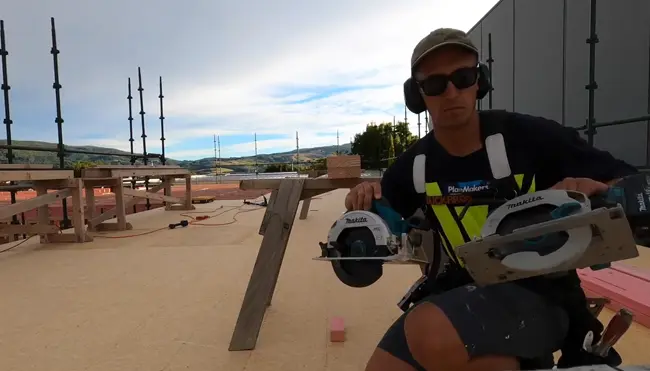
During my research using both right-handed and left-handed circular saws for woodworking jobs, I found a significant difference in safety and blade exposure.
Right-blade saws, designed for right-handed users, provide a safer operation by keeping the blade away from the user’s body during use. This design reduces the risk of accidental contact with the blade, especially in the event of kickback.
On the other hand, left-blade saws, intended for left-handed users, may expose the blade more to the user’s body during operation. This increased exposure can pose a higher risk, particularly for left-handed individuals who may be less accustomed to this design.
No 05. Dust Control and Efficiency
Right-blade saws, with the blade positioned on the right side, offer better potential for efficient dust control. This is because the dust extraction system can be optimized on the same side as the blade, allowing for more effective removal of debris and dust.
In contrast, left-blade saws may not provide the same level of dust control advantages. This can lead to more accumulation of debris and dust on the cut line, potentially affecting the visibility and precision of the cut.
No 06. User Familiarity with Corded and Cordless Models
With corded models, many woodworkers appreciate the familiarity and feel of the right-handed design, especially if they’ve used full-sized corded saws before. The ergonomic similarities make it easier for users to transition and adapt to the tool, allowing for better control and precision in their woodworking tasks.
On the other hand, cordless saws, which are typically left-handed, cater to users who are more accustomed to the design of worm drive saws. This design choice aligns with the preferences of those who’ve previously used corded tools and are transitioning to cordless ones.
No 07. Carpentry Scenarios
As a woodwork enthusiast, the differences between right-handed and left-handed circular saws become particularly apparent in various carpentry scenarios.
When making crosscuts, the blade’s position can greatly impact the line of sight and the ease of following a marked line. Right-blade saws, with their sidewinder designs, tend to provide better visibility for right-handed users when making crosscuts.
Conversely, left-blade saws, commonly found in worm-drive designs, may offer improved line-of-sight for left-handed users in these scenarios.
Additionally, when making plunge cuts or working in tight spaces, the ergonomics of the saw play a crucial role. Right-handed users may find it more comfortable and natural to use a right-blade saw, while left-handed users may prefer the handling of a left-blade saw.
No 08. Blade Selection
Right-handed circular saw users may find various blades designed for right-blade saws in the market. The availability of blade options and accessories can be a deciding factor for users who prioritize versatility in their woodworking projects.
Meanwhile, while left-blade circular saws are less common, blade selection may be slightly more limited. However, this doesn’t mean that suitable blades can’t be found for left-blade saws.
Users must consider the woodcut type, the desired cut quality, and the specific woodworking project requirements when selecting a blade.
As far as I know, blade options may vary in tooth count, blade material, and blade design, each offering unique advantages and disadvantages. The blade should also be sharpened regularly with a circular saw blade sharpener to ensure optimum performance.
| Feature | Right-Handed Circular Saws | Left-Handed Circular Saws |
| Blade Orientation | Blade on the right side for clear sightline. | The blade on the left side for improved visibility. |
| Cut Line Visibility | Excellent single-handed, obstructed with both hands. | Excellent with both hands, but may require looking over the left shoulder. |
| Motor Weight Distribution | Motor weight on the supported side for stability. | Motor weight over the waste edge is potentially less stable. |
| User Dominance and Comfort | Ideal for right-handed users, the left hand may partially obscure the view. | Suited for left-handed users, may require looking over the left shoulder. |
| Safety and Blade Exposure | Reduced risk, keeps the blade away from the user’s body. | Higher exposure is potentially riskier for left-handed users. |
| Dust Control and Efficiency | Potential for better dust control on the same side as the blade. | May not offer the same level of dust control advantages. |
| User Familiarity (Corded Models) | Familiar design for users transitioning from full-sized corded saws. | Aligns with a worm drive saw preferences, common in cordless models. |
| Carpentry Scenarios | Better visibility for right-handed users in crosscuts. | Improved line-of-sight for left-handed users in crosscuts. |
| Handling in Plunge Cuts | More comfortable for right-handed users. | More comfortable for left-handed users. |
| Blade Selection | Various options are available for right-blade saws. | Slightly more limited options for left-blade saws. |
Which circular saw blade orientation is safer for woodworking?
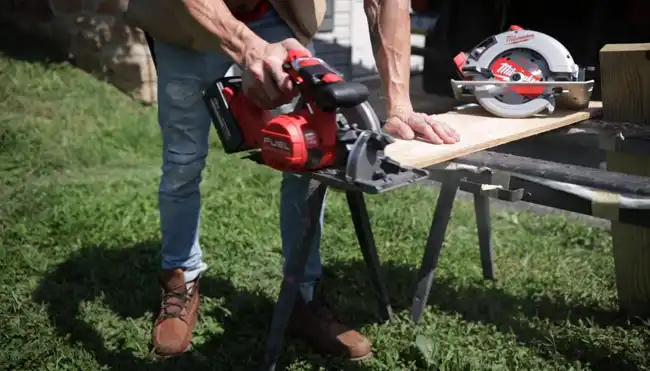
While left-blade circular saws provide better visibility of the cutting line, they can obscure the blade from the left side view, potentially leading to safety concerns.
On the other hand, right-bladed circular saws direct the blade away from the user’s body, making them generally considered safer for right-handed users. As a result of this design, there is less chance of accidental contact with the blade, minimizing the potential for injuries.
Additionally, the visibility of the cutting line can be improved by using a laser guide or marking the cutting line on the workpiece.
How do you know if a circular saw is left or right-handed?
To determine if a circular saw is left handed or right-handed, I recommend simply checking which hand the main handle is designed for.
A right-handed circular saw will have the main handle on the right side, allowing for a comfortable grip with the right hand. This design ensures the blade is on the right side, preventing any interference or obstruction when cutting materials.
Additionally, a left-handed circular saw will have its main handle positioned on the left side, making it easier to grip with the left hand. This design is specifically catered to left-handed individuals, ensuring that they can operate the saw efficiently and safely.
Can I use a right-blade circular saw if I’m left-handed?
Left-handed individuals may need to adjust their hand positioning and sightlines when using a right-blade circular saw because of the difference in design. Since the blade is positioned on the right side of the saw, most of the saw’s weight will be on the left side. This can affect the balance and control of the saw, especially during two-handed operation.
To compensate for this, I recommend gripping the handle more firmly with the left hand and adjusting your stance to maintain stability. Additionally, the sightlines may be slightly obstructed due to the blade’s position, so you must be more mindful of my cutting line and make necessary adjustments to ensure accuracy.
Right Handed or Left Handed Circular Saw: Select the Perfect One
After examining the differences between right-handed and left-handed circular saws, I believe the blade orientation for woodworking depends on individual comfort and skill.
Right-handed users often find right-blade saws more intuitive, while left-blade saws offer distinct advantages regarding line-of-sight visibility. Safety considerations, adaptation, and personal preferences all factor in, underscoring the nuanced nature of this decision.
Woodworkers must weigh the pros and cons of each orientation carefully, as there is no definitive answer to the question of which blade configuration is superior.
- Cordless Precision Cutting
- Extended Battery Life
- Quick Bevel Adjustment
- Thin-Kerf Carbide-Tipped Blade
- Saw Line Visor for Accuracy
- Powerful 15 Amp Motor
- Versatile 55-Degree Beveling
- Durable Magnesium Construction
- Tool-Free Blade Changes with Spindle Lock
- Comfortable and Lightweight Design
Last update on 2025-12-22 / Affiliate links / Images from Amazon Product Advertising API

